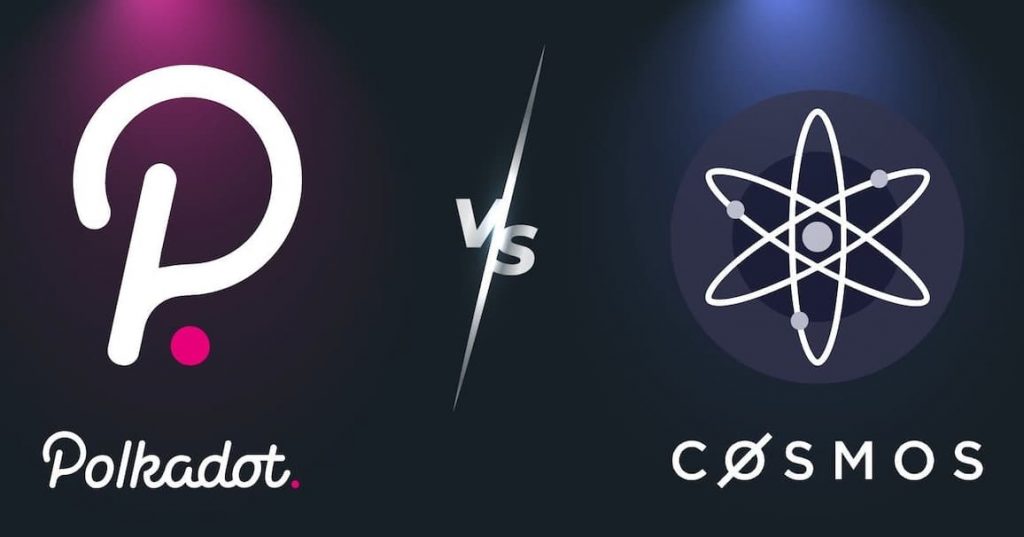Buy Cosmos or Polkadot – Coins like Bitcoin and Ethereum’s blockchain were designed to function autonomously. However, as builders anticipate the arrival of Web3 (the third generation of the Internet), they are becoming more concerned about scalability and interoperability across chains.
Polkadot vs Cosmos are two protocols that attempt to meet this need by facilitating the establishment of links across various blockchain networks. Although they do so in various ways, both networks allow programmers to link up several other blockchains to serve as the underlying support system for dApps.
Which is Better to Buy Cosmos or Polkadot?

Cosmos cryptocurrency coin (ATOM) and Polkadot token are two options for investors seeking exposure to these ventures (DOT).
What makes Polkadot different from Cosmos?
The Cosmos and Polkadot protocols, as we have seen, are both working toward the same goal of making it possible to scale the decentralized Web3 by establishing interoperable networks of blockchains. The Polkadot Relay Chain functions like the Cosmos Hub in that it relays information between different zones, in this case, parachains.
Polkadot and Cosmos are examples of interoperable Layer 0 networks due to their compatibility features. While Layer 2 protocols provide improvements like increased processing speeds and scalability, Layer 0 networks make it possible for Layer 1 blockchains like Ethereum and Bitcoin to function on the same network.
In what ways do they differ then? In a matchup between Cosmos and Polkadot, which one fares better?
When comparing Cosmos with Polkadot, unified network security is a key differentiator. In contrast to blockchains linked to the Cosmos Hub, all Polkadot parachains have the same pooled security as the Polkadot Relay Chain.
Because Polkadot’s parachains are implemented using a sharding paradigm, changes to the state of any given parachain propagate to the others. Within Cosmos, numerous hubs act as nodes on chains that span different zones. Polkadot also allows for cross-chain token and data transfers, whereas Cosmos is dedicated to asset transfers.
By comparing Cosmos with Polkadot, we can see that both protocols for facilitating blockchain transactions have the same overarching goal of easing chain interoperability and enabling horizontal scaling, but they go about accomplishing this goal in quite different ways. How profitable have investments been in their domestic cryptocurrencies?
Keep in mind that while analyzing cryptocurrency values, historical performance is no guarantee of future results. The value of a cryptocurrency may rise or fall depending on the general direction of the cryptocurrency markets and how quickly and widely a blockchain network is implemented and used. As the markets try to recover from recent significant losses, prices have decreased year to date.
You are responsible for doing your own research in order to assess whether or not a cryptocurrency token would be a good addition to your portfolio.
Conclusion: Is Cosmos a better choice than Polkadot?
To establish your own opinion about blockchain networks like Polkadot and Cosmos and their own native coins, you should read up on them independently. Depending on your goals and comfort level with uncertainty, your investigation may lead you to conclude that one project is preferable to the other.
On the Godex website, you may investigate a comprehensive comparison between Polkadot and Cosmos in the same straightforward manner as other cryptocurrencies, like ADA vs Matic.
